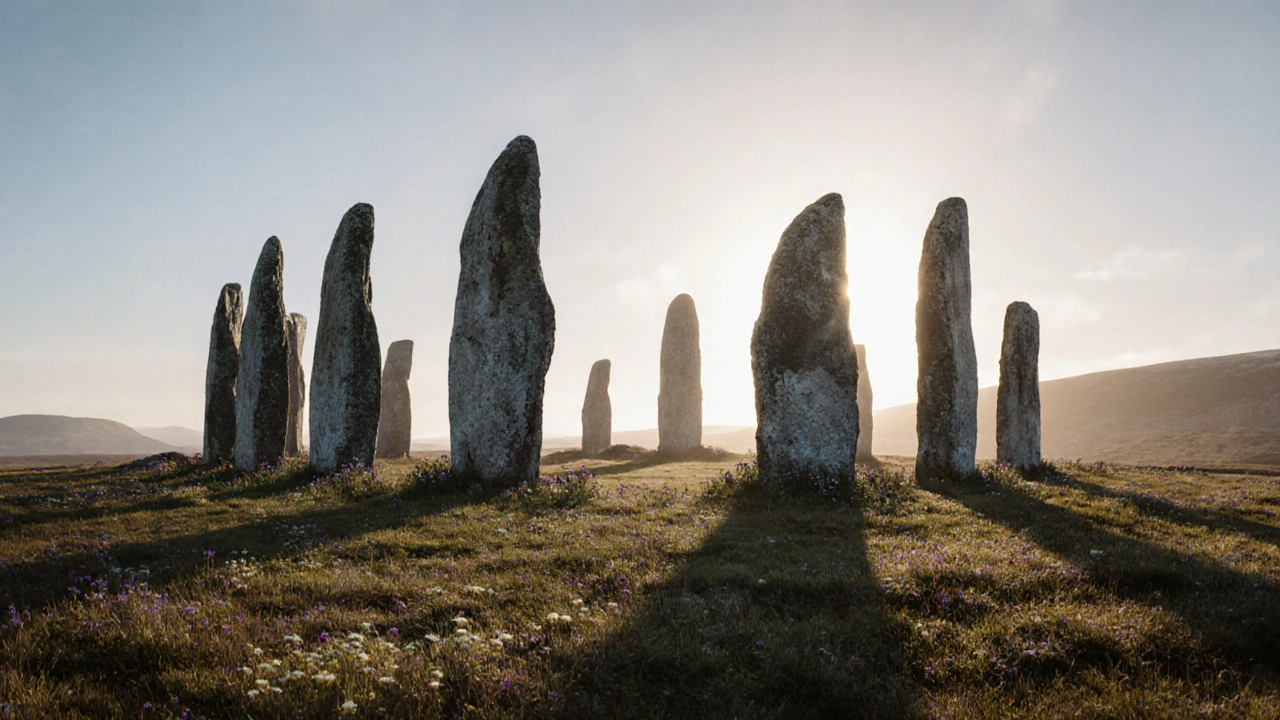Bronze Age Scotland
When you think of Bronze Age Scotland, the period between 2500 and 800 BCE when people in what is now Scotland began using bronze tools and weapons. Also known as the Scottish Bronze Age, it’s when the first large-scale farming communities took root, built stone circles, and buried their dead in cairns that still dot the hills today. This wasn’t just a time of metalwork—it was the foundation of Scotland’s earliest organized societies.
People lived in small, scattered villages, often near rivers or coastlines, where they farmed barley and raised cattle. They didn’t have writing, but they left behind powerful traces: Bronze Age artifacts, including socketed axes, daggers, and ornate gold torcs found in places like Stirling and Aberdeenshire. These weren’t just tools—they were status symbols, trade items, and sometimes offerings to the gods. You’ll find them in museums today, but they were once carried in hands that walked the same paths you hike now.
One of the most striking features of this era is the rise of ritual landscapes. Scottish Bronze Age settlements, like those around the Cairngorms and the Orkney Islands, show evidence of long-term occupation, with stone houses, storage pits, and communal gathering spots. Meanwhile, Bronze Age burial mounds, such as the cairns at Clava near Inverness or the cists in the Highlands, reveal complex beliefs about death and the afterlife. These aren’t just piles of rocks—they’re carefully constructed tombs, aligned with solstices, filled with pottery, weapons, and sometimes the remains of multiple generations.
What’s surprising is how connected these communities were. Copper came from Ireland, gold from the west coast, tin from Cornwall—trade routes stretched across Britain and beyond. People didn’t live in isolation; they moved, exchanged goods, and shared ideas. The tools they made, the songs they sang, the stories they told—all shaped the land long before castles or clans existed.
What you’ll find in the posts below aren’t dry academic papers. They’re real, grounded stories about places you can still visit today: the standing stones still standing, the buried tools still waiting to be found, the hills where farmers once tilled soil with bronze shovels. Whether you’re hiking in Fife, touring the Highlands, or just curious about what came before, these pieces connect you to a time when Scotland was being shaped by hands you’ll never know—but whose legacy is still here.

Neolithic and Bronze Age Scotland: Standing Stones and Ancient Sites
Caleb Drummond Nov 16 12Explore Scotland's ancient standing stones and prehistoric sites from the Neolithic and Bronze Age. Discover how these monuments were built, what they meant, and why they still hold power today.
More Detail